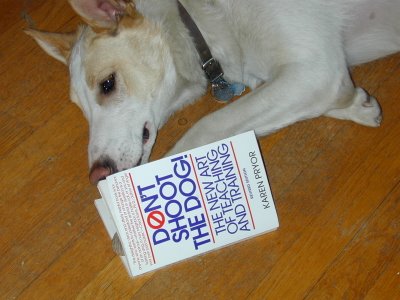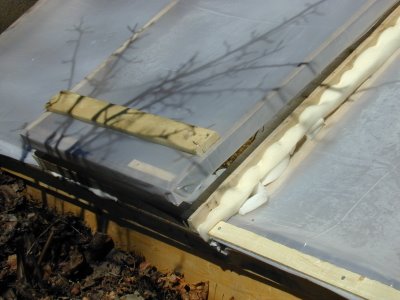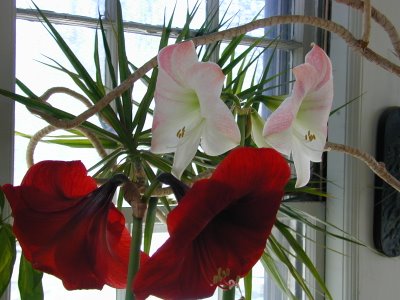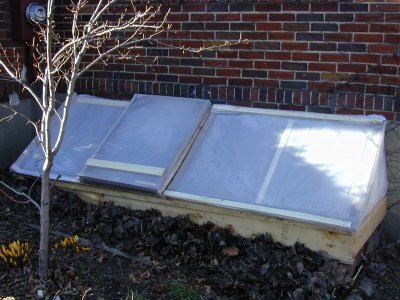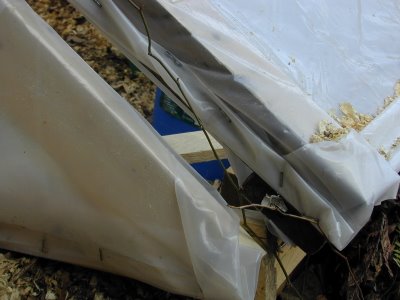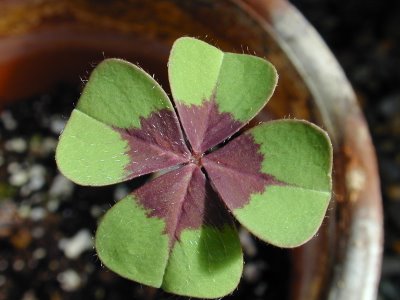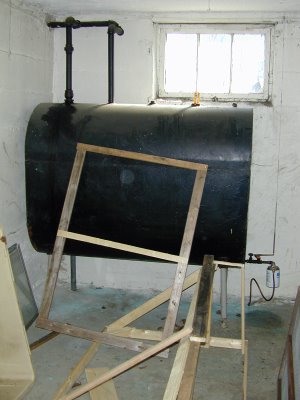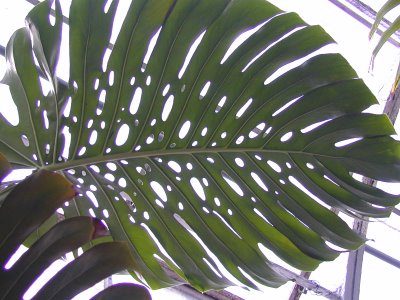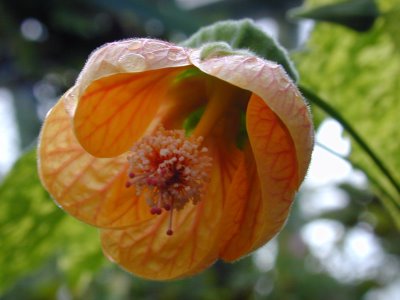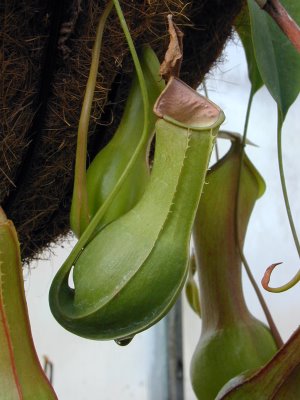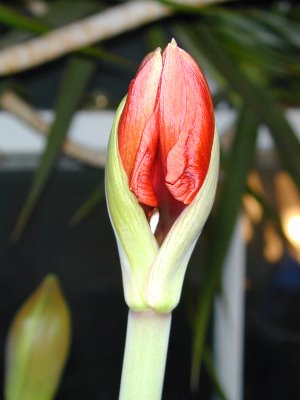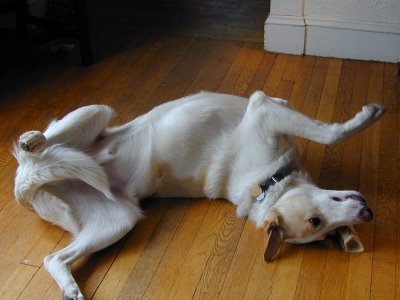

Don't' forget weekend dog blogging over at
Sweetnicks later today.
I've decided that today instead of continuing on the cold-frame topi I'll save that for a later post and write a dog post instead. Reading Walter's
POST this morning about one of his dogs, Kavi at Sugar Mountain Farm made me think of dogs and dewclaws. He did not mention dewclaws. Rather, part of what he wrote about was his dog's manipulation of objects. That reminded me of dewclaws and their role in manipulation.
Dewclaws are the fifth claw on a dog's leg. They are usually higher than the other claws. Most dogs seem to be born with them on their front legs and a few even have them on their back legs.
Often breeders will remove the dewclaws when the puppies are only a few days old. All of the dogs I've owned before Kahlil have had their dewclaws removed. There is a difference of opinion on removing dewclaws as a web search will show. Before I got Kahlil, I didn't give it much thought. Now that I've had one dog with dewclaws and many without, I am in favor of leaving front dewclaws on. There is the possibility of catching a dewclaw in brush or on other things and causing injury. However, after watching Kahlil manipulate things with his paws, I see just how useful dewclaws are for a dog. He uses them like thumbs. I now see no reason to cut off a useful body part simply because it may catch on something and get injured. If that were the case most of us would be without our little toes and either we would have to remove zippers from pants or... well I don't want to go there.
This morning, I decided to get out my camera to see if I could capture him manipulating things with his dewclaws. I figured it would be easy. I gave him one of his old bones. Right away I could see him using his thumbs. The only problem was that it was not easy to show the action of manipulating with a still camera. The long shutter speed required when the flash is off makes it even more difficult. If I keep the flash on, I start to conditioning my dogs to leave the room when I pick up the camera. I could have gone outside for better light, but I was just too much of a wimp to sit out in the cold mud today. OK. so now that I have given all sorts of excuses for the bad photography, let me continue on about Kahlil and his dewclaws. I gave him the old bone and he started to chew it on the rug where he wisely knew there was good traction. I told him he had to chew it on the wood floor because I thought that the pattern of the rug was too busy for a good photo. He complied. The bone was slipping around on the wood floor, so he picked it up and put it on one of the dog blankets that litter the place for better traction. Although the photos donÂ’t actually show the use of his dewclaw, I can attest that he used his dew claws both like thumbs in grasping and also in pushing. It is probably very easy to observe this in your own dog if it still has dewclaws. The bone was still not stable on the blanket. He then did something that I though was interesting, considering that I was watching and taking the pictures to document manipulation. He pushed the bone under the blanket with his nose. I can not say for sure if this was intentional . He then wrapped the blanket around the bone to stabilize it. Although the following photos are blurry, I think they show what I am describing. I do know that he easily could have removed the bone from the blanket if he had wanted to, but he did not. It seemed that eating the bone wrapped in the blanket was a very interesting form of manipulating of objects that I had not even started out to document. Dogs can be so interesting sometimes, especially when I supposed to be doing something else like bill paying or laundry.
Cocoa my other dog has an interesting type of blanket manipulation herself. She can totally wrap herself up in a blanket tha is in a heap on the floor. It is a hoot to watch. Guests love it. I have to think of a way to show it without a video camera. My sister-in-law once had a pointer who rang the back door bell to be let in and I had a pointer who learned how to open a difficult gate latch and let himself out of the yard.
What other kinds of interesting manipulation of objects have you observed in your dogs? Does your dog have dewclaws? Has you dog ever injured a dewclaw? What do you think of dewclaw removal? Please comment. I love this kind of stuff.

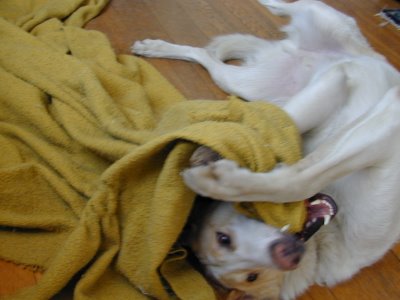
 The lettuce, broccoli raab, and baby spinach seeds that I planted in the cold-frame last week have already sprouted and will soon need thinning. From my temperature readings, I have noticed that the cold-frame nightly low is staying about 9 or 10 degrees warmer than the low temperature outside of it. This would mean the the low temperature approximates late April temperatures instead of late March temperatures. I think if I'd finished the cold-frame sooner I could have started planting lettuce sooner. That will be an experiment for next year.
The lettuce, broccoli raab, and baby spinach seeds that I planted in the cold-frame last week have already sprouted and will soon need thinning. From my temperature readings, I have noticed that the cold-frame nightly low is staying about 9 or 10 degrees warmer than the low temperature outside of it. This would mean the the low temperature approximates late April temperatures instead of late March temperatures. I think if I'd finished the cold-frame sooner I could have started planting lettuce sooner. That will be an experiment for next year.





